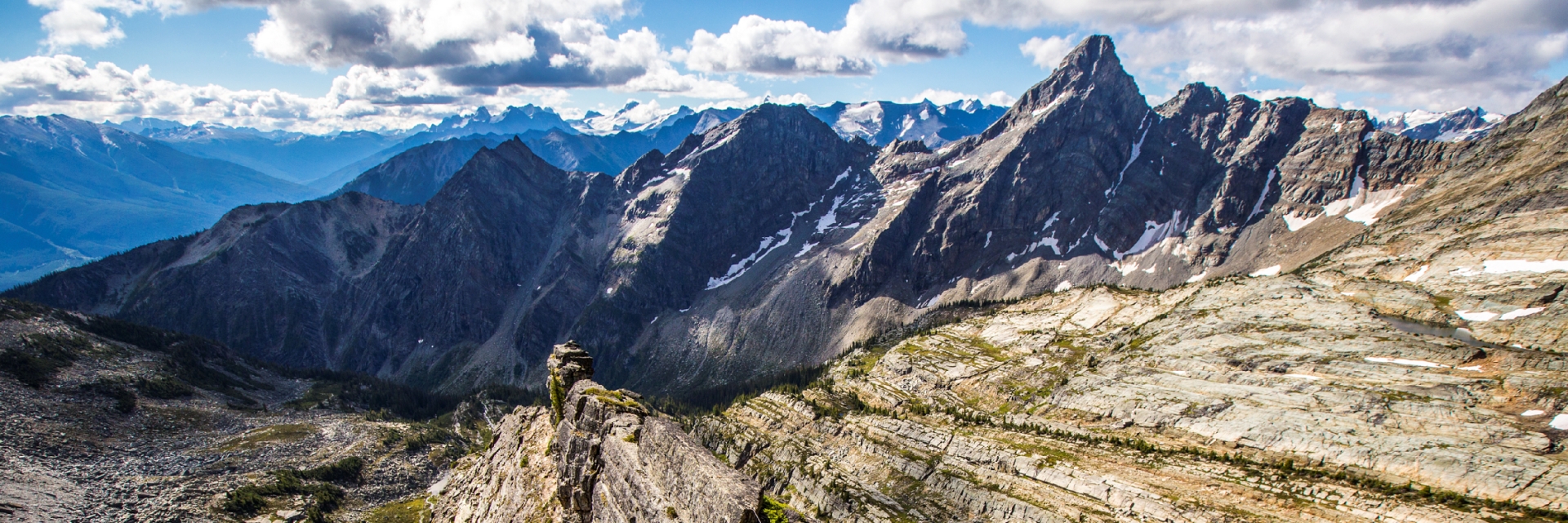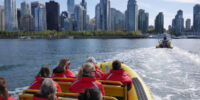
Glacier National Park | Ryan Creary
What Makes a Website Effective?
The #1 most important digital asset your organization needs in today’s world is a website.
Your website, in many cases, is the first ‘digital’ impression your organization will make. It’s also an asset you have complete control over. Social media channels, such as Facebook may limit your ability to post certain types of content and may affect your reach through algorithms. Your website, on the other hand, is yours to design and configure exactly the way you want.
In the digital world, creating a strong and effective online presence is imperative. When people visit your website, they are looking for information. Did you know that people’s average attention span today is only about 8 seconds? You need to ensure that you’re providing readers with the information they’re looking for in an easy and user-friendly manner. Poorly structured or slow performing websites give a poor first impression, and visitors are likely to leave your website sooner – with or without valuable information.
It’s important to remember when planning and developing a website, that it supports your business’ goals and objectives. If your ads, events, public relations, and social media are successful, they will inspire people to visit your website. Therefore, it’s essential that your website not only tell a great story, but that it’s a consistent message that aligns with what you’re saying in other parts of your business’ marketing activities.
So, what makes a great website and how can you set yours apart from the rest? We’ve put together some key items to focus on to help you make sure your website stands out.
Your Website’s Purpose
You want your website to serve a purpose and to help support your business objectives. Before you even begin designing (or redesigning) a website, identify what the purpose of your website is. Is it to help potential guests learn about the area? Is it to encourage online bookings for your business? Each page of your website needs to have a clear purpose or theme, and to fulfill a specific need for the website user in the most effective way possible. Once you understand the purpose of your website you can start to tell a story through your content and navigation.
User Experience
People want information quickly, so it’s important to think about user experience. Images, video and other rich media can help to tell a visual story of your business in seconds. It helps pull the reader in and encourages them to explore more of your website. Many websites are designed like scavenger hunts, making it difficult for the reader to find the information they’re looking for. To help make their experience easier, simplify its navigation, use clear calls-to-action, and use headlines, subheadings, and bullet points to break out text-heavy content.
Responsive Design
According to Google, more than 50% of website browsing is done on a mobile device. It’s more important than ever for your website to be mobile responsive, meaning that it navigates well on a mobile phone just as well as it does on a desktop. Today, we refer to this as responsive design. Since there are so many different types of phone and tablet devices, you want to have your website running smoothly and be easily viewed on a variety of devices. Having a responsive website is a must!
Website Speed
No one likes to wait a long time for a website to load, especially on mobile. Google best practices indicate your website should load in 3-4 seconds. You can test your website speed using Google’s PageSpeed Insights test. Make sure your website runs smoothly by optimizing videos and images for quicker downloads and using a website host that can handle your bandwidth demands.
Visuals & Imagery (Visual Storytelling)
It’s been said that an image is worth a thousand words, and this couldn’t be more true for websites! Having branded photography on a website is vital in showcasing your story. It ultimately sets the stage for the content that will follow. A single photo should be able to stop viewers in their tracks and leave them wanting to explore further into your site. The first impression is always the most important.
In tourism we identify three levels of image photography:
- Signature: These images tend to be above the fold and create the first impression. They are intended to be awe-inspiring and evoke a sense of emotional-urgency.
- Experience: Experience-based photos start to build context and help to deepen the interest of the specific place and experience.
- Moments: Moment photos define specific moments and reach into additional senses like sight, sound, and smell. They are perfect for Instagram and other social media platforms.
Website Copy
Images set the stage, but copy delivers. Create copy that tells a story, versus copy that simply lists features. Ultimately, you want to deliver a message that is going to make people remember you even after they leave your site.
Here are four types of content:
- Informative: This content is great for search engine optimization (SEO). It can be detailed and explain things to do in an area or provide answers to commonly asked questions.
- Entertainment: Entertainment content fuels social media, sharing, and awareness of your brand through its personality. This may be achieved by including user-generated content.
- Narrative: Narrative content builds on itself, whether it’s a chef trying out a series of recipes, or a guide taking us on a virtual tour of all her favourite trails.
- Itinerary: Like informational content, itinerary content works in a very specific way. Itineraries are a way for you to offer value to your different guest persona by being their local expert. This type of content is a great way to collaborate with others in your area.
Choosing A Platform
There are many different types of website platforms. It’s important to understand what platform will best fit your needs for the organization. Here are some of the most common types of website platforms.
- WordPress: The most commonly used platform. This platform is perfect for websites that want multiple functions and require flexible design.
- Squarespace: This platform is easy to get started with. You can easily use plug and play options, making it a good first website for smaller organizations.
- Shopify: If you are planning to have an online store, Shopify is the most commonly used online shopping platform. There are some limitations with design and functionality.
- Wix: Another great first website platform is Wix. It is budget friendly and easy to use. As you expand your business you may need to replace the website with a more complex system but for starting up it’s a great first website option.
SEO & Keywords
The key objective of a website is to be found by your potential guests and help provide them with the information they’re looking for. To help your website be found by Google, you need to incorporate search engine optimization and keyword best practices. There are numerous factors that go into SEO ranking but here are four key areas:
- Site Content Relevance: This looks at how relevant your entire website is based on a specific keyword or phrase. When a potential guest types a word or phrase into Google, Google wants to provide the most relevant results for their search query. The keywords or phrases you are using need to match the content on your site. Google Keyword Planner can help you identify the right keywords for your customers.
- Site Content Quality: This looks at the quality of your content. Here, Google may look at how much content is on the page, and whether you include any rich media, like images and video. It also considers how often your website content is updated.
Inbound Linking: One of the indicators Google looks at to determine how good a website is, is through looking at who else links to the website. Do not buy links, instead grow your links organically. Different types of links have different weight (known as Domain Authority). For example, Google will see a government organization linking to your website as a more valuable link, compared to a local blogger. - Social Media Activity: Google also looks at other indicators such as your social media activity, and if people are sharing links to your website on social media. Having social sharing buttons can be a good way to help increase the probability of your content being shared on social media.
It can be easy to get caught up in writing content that helps increase your Google ranking but the most important thing to do is to build and write your website for people first, Google second. If your guests like your website and your content, Google will reward you in the end.
When it comes to building a website there can be a lot of elements to consider and this list is just a small portion of what you may want to get started on. By keeping these principals in mind for your next website, you will be closer to having a more engaging, useful, and effective website for your guests.





